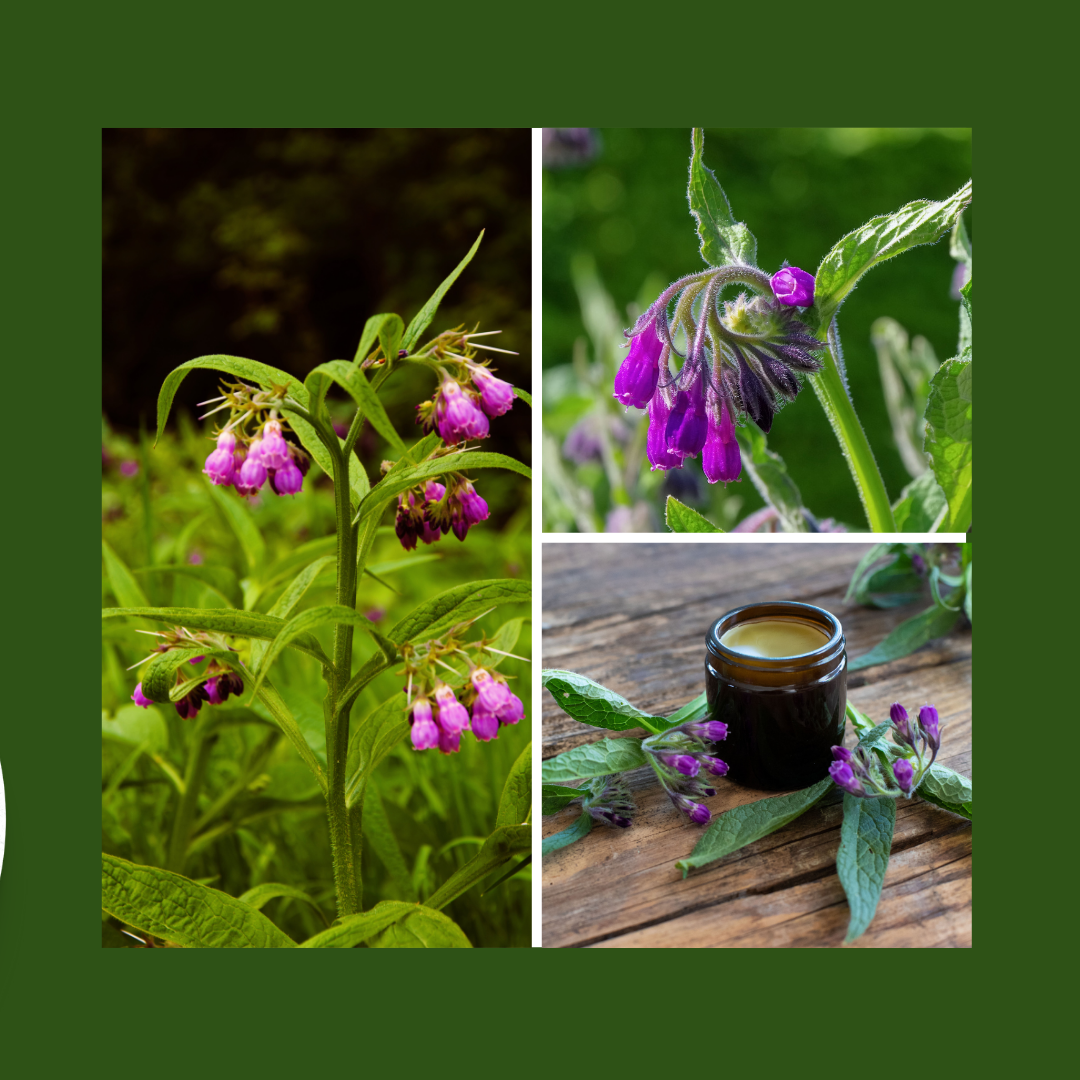
Today, I planted Comfrey in My Garden ,and I Can’t Wait to Watch This Beauty Grow.
Yesterday, I wrote about Mealycup Sage, which is more of a blue violet in color tone, Comfrey is red violet. I love all the tones of violet in my garden. The violets are excellent accents and/or backdrops for all they other flowers growing in my garden. Violet and yellow are complementary colors, and I grow many yellow flowers. During the early summer, I grow calendula and marigolds, and during the late summer, I grow black-eyed Susans and Crackerjack Marigolds.
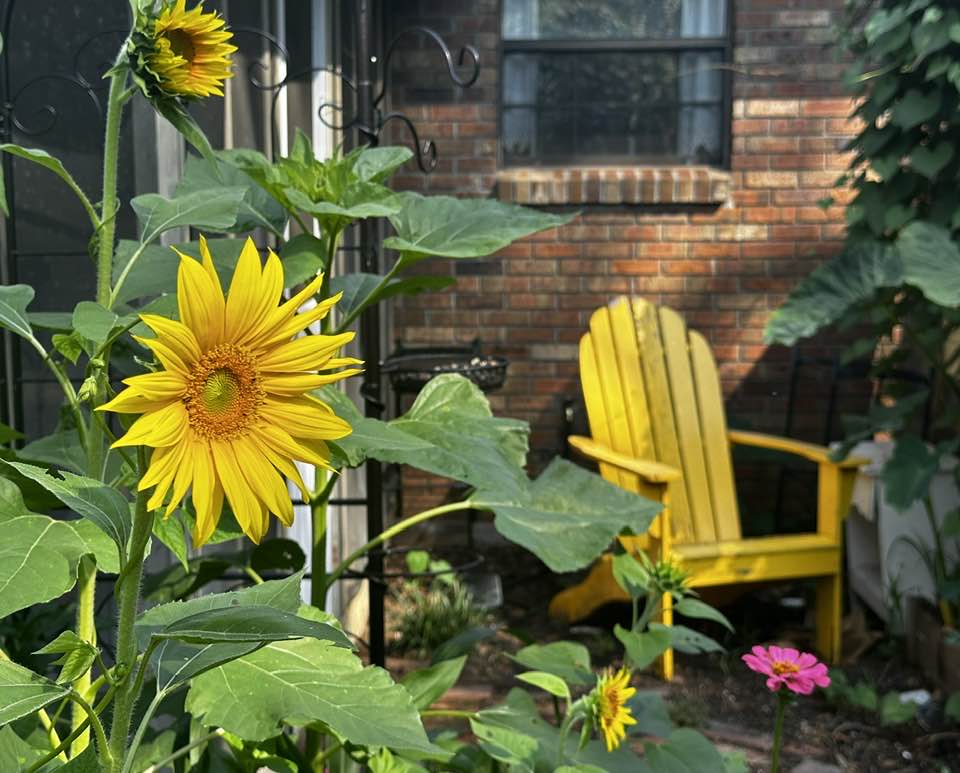
Thanks to my birds, I grow sunflowers all summer.
There are always yellow things in my garden, but the violet-toned flowers are excellent backdrops for other flowers, too.
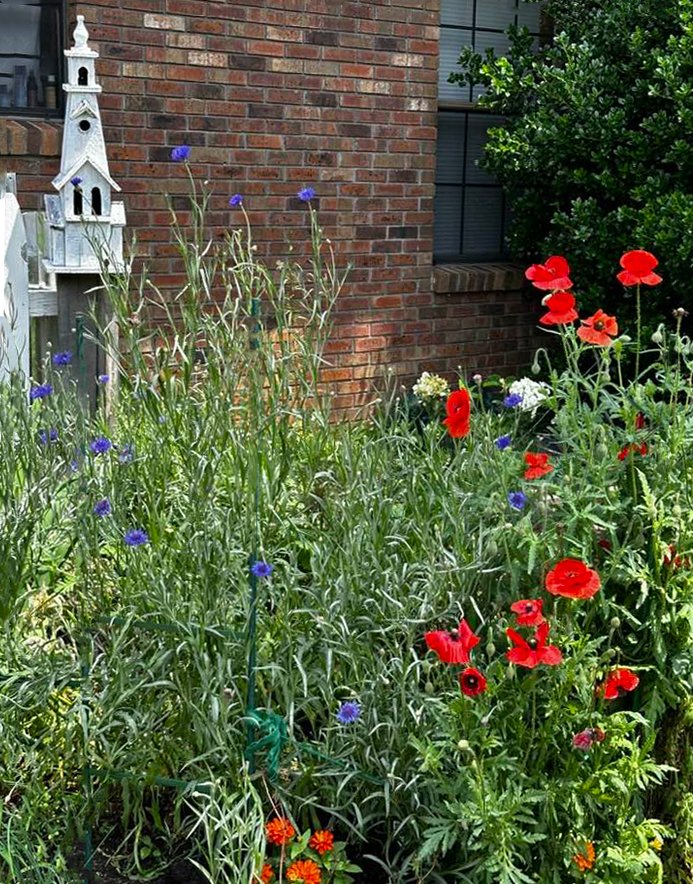
Violet Blue Bachelor Buttons and Red Poppies
Jacki Kellum Garden Summer of 2024
I am planting more of the bachelor button and red poppy seeds for next year’s garden, too, but I am also planting some of my blue salvia with scarlet bee balm for next year.
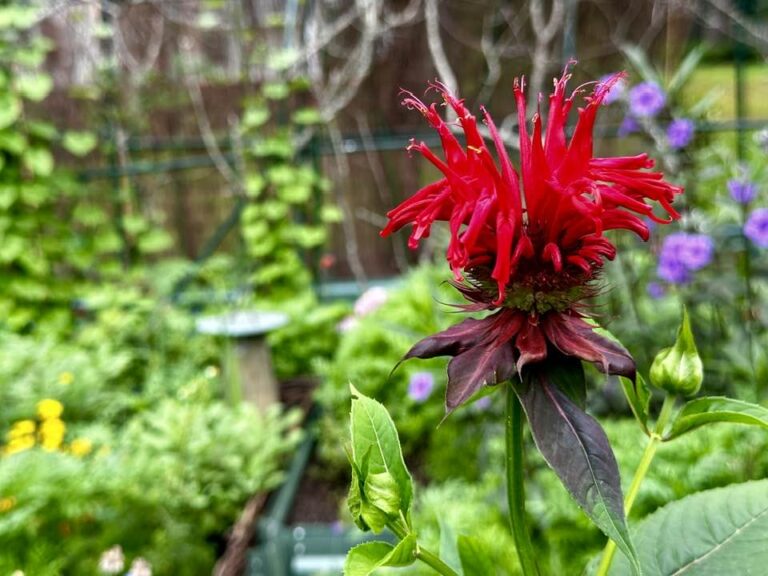
Scarlet Jacob Cline Bee Balm in front of violet Mexican Petunia – Jacki Kellum Garden – 2024.
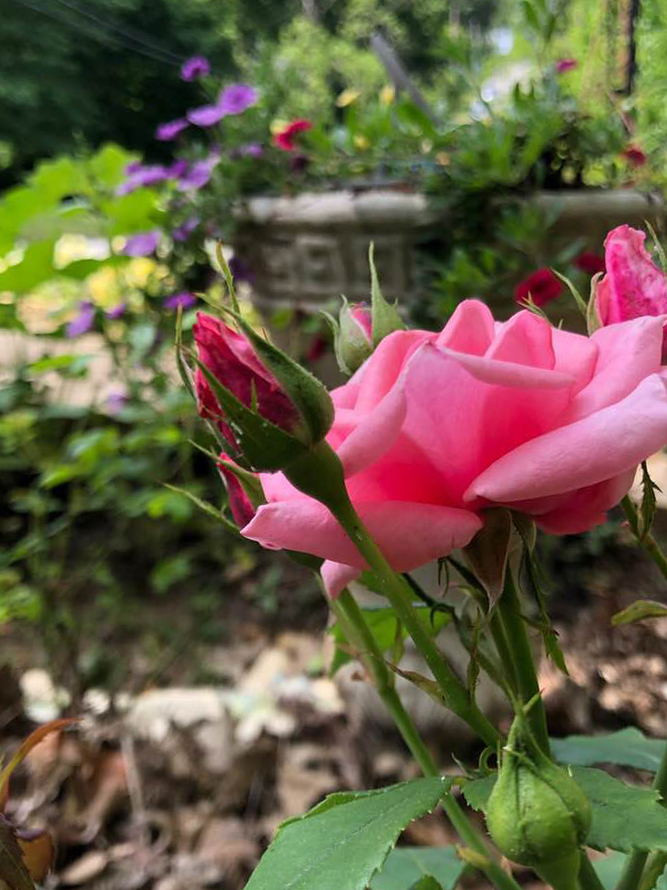
Gene Boerner Pink Rose in front of trailing violet blue vebena in Jacki Kellum Garden.
Perhaps my very favorite color combo in my garden is pink and violet blue.
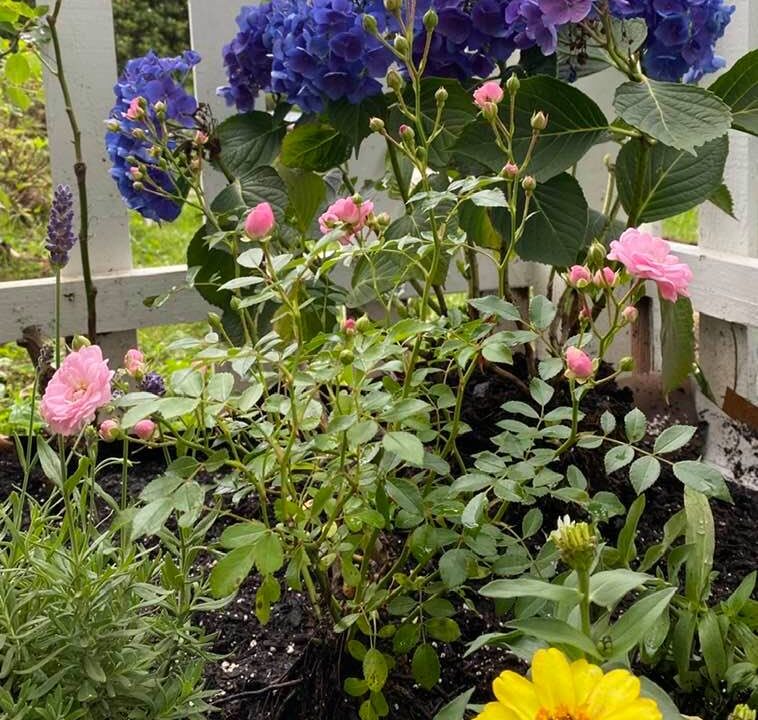
Pink Fairy Rose in front of Violet Blue Hyrangea
Jacki Kellum Garden
Although Comfrey is a healing herb, my primary reason for growing it is because I cannot get enough lavender tones in my garden.
Yet, indeed, Comfrey is a healer:
“Comfrey’s names testify to its traditional use in mending broken bones. “Comfrey” is a corruption of con firma, meaning the bone is ‘made firm,’ Symphytum is derived from the Greek for ‘to unite,’ and knitbone speaks for itself. Comfrey is also a wound herb. K’Eogh in his Irish Herbal (1735) wrote that it ‘heals all inward wounds and ruptures.’ Today, it is still highly regarded for its healing properties.
Habitat & Cultivation
“An indigenous European plant, comfrey grows in all temperate regions of the world, including western Asia, North America, and Australia. It thrives in moist, marshy places. It can be grown from seed in spring or by root division in autumn, and the leaves and flowering tops are harvested in summer. The root is unearthed in autumn.
Key Actions
■ Demulcent
■ Astringent
■ Anti-inflammatory
■ Heals wounds and bones
“Germany and elsewhere in Europe, comfrey is widely used for sprains, bruises, and sports injuries. Research, mostly in Germany, endorses the traditional knowledge of comfrey’s woundhealing ability. In a 2007 study, physicians rated the efficacy of a comfrey leaf cream in healing abrasions. The doctors rated its effectiveness as good or very good in 93% of cases, and complete healing took 4 days with comfrey and 7 days with placebo. Other studies indicate comfrey’s value in promoting tissue repair and as an anti-inflammatory in conditions such as sprained ankle, osteoarthritis, and lower back pain.
Traditional & Current Uses
■ Injuries
“Comfrey’s ability to promote the healing of bruises,sprains, fractures, and broken bones has been known for thousands of years. It encourages ligaments and bones to knit together firmly. A comfrey compress applied immediately to a sprained ankle can significantly reduce the severity of the injury. The combination of tannins and mucilage helps to soothe bruises and grazes.
■ Other uses
“Comfrey was known to the Greek physician Dioscorides in the 1st century ce, who wrote about it in his Materia Medica.
Parts Used Key
“Preparations & Their Uses applied to heal problems such as insect bites, scars, skin inflammation, acne, and mastitis.” Chevallier, Andrew. Encyclopedia of Herbal Medicine, pg. 138.
Discover more from Jacki Kellum
Subscribe to get the latest posts sent to your email.